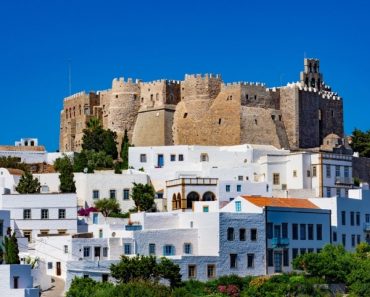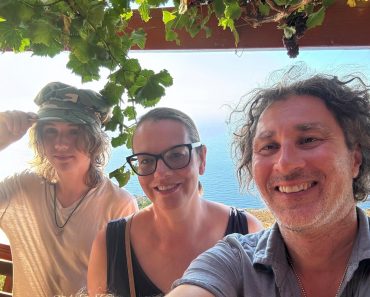
Santorini, one of Greece’s most iconic islands, has unveiled a different tourism campaign for 2025, highlighting the unseen and authentic side of the popular tourist destination in the Aegean Sea.
The campaign, Santorini’s first in over a decade, was presented this week at the Acropolis Museum in Athens. It showcases a different side of the island, one defined by culture, sustainability and local experiences. The campaign, launched just as the tourist season kicks in, is part of the broader initiative “Santorini 2025: Year of Promoting and Supporting Authenticity,” which aims to preserve and promote the island’s unique culture and natural identity.
The message of the Municipality of Santorini, which spearheads the campaign, is encapsulated in a two-minute promotional video showcasing Santorini’s natural beauty, local cuisine and ancient heritage while protecting the natural environment. It emphasizes five themes: culture, tastes, experiences, landscape and the Volcanic Park.
“Our goal is to illuminate the invisible face of Santorini,” said Georgia Nomikou, president of the municipality’s Tourism Committee. “To showcase images, moments, and stories that go beyond the postcard image and invite people to discover the island as it truly is.”
Last summer, Santorini, long admired by visitors for its scenic sunsets and volcanic landscapes, made international headlines for the wrong reasons, as outlets shared photos of its narrow streets overcrowded with masses of tourists. Earlier this year, Santorini was rattled for weeks by earthquakes, leaving the tourism industry anxious that the tremors would prevent many travelers from visiting the picturesque Greek island. However, the island has been now declared safe and ready to welcome tourists.

During the launch of the campaign, Santorini Mayor Nikos Zorzos said that the island needs to refocus on its identity while emphasizing the need to return to authenticity.
“Starting this year, we will seek authenticity through actions and experiences that bring us closer to the place we claim to admire but often overlook,” he said.

Santorini’s unique ancient heritage and flavors also highlighted in new tourism campaign
Almost sixty years ago the Bronze Age city of Akrotiri, the Aegean’s Pompeii on Santorini, was uncovered, offering an extraordinary glimpse into a civilization preserved in volcanic ash. This discovery remains one of the most significant archaeological finds, revealing a sophisticated society that thrived over 3,600 years ago and which is often overlooked by tourists visiting the island.
Akrotiri was buried by ash from a gigantic volcanic eruption in 1650 BC, frozen in its Bronze Age glory, and serves as an exquisite time capsule for contemporary archaeologists who learn more every day about the mysterious lives of its inhabitants.
Located on the Greek island that was at that time called Thira after the mythical ruler of the island, Theras, the ancient city was part of the Minoan civilization which flourished there and on the nearby island of Crete.
The eruption of the island—which had originally been called “Stronghili,” or “round”— decimated all life on the island and erased an entire city-state.
Moreover, Santorini is home to the world famous and award-winning Santorini wines, produced from volcanic vineyards for millennia. The exquisite quality of Santorini wines is certified by the EU’s Protected Designation of Origin stamp, which defines and safeguards its special characteristics, exclusive to the island’s particular geographical environment and inherent qualities.
Wine production on Santorini dates back to the 3rd millennium BC, and, according to archaeological finds, its vineyards have produced wine uninterrupted for 4,000 years with only a 300-year break following the infamous volcanic eruption that covered the island in ash.
Santorini wine is considered the ambassador of Greek wine-making abroad. The volcanic substrate provides the local wine with unique characteristics: its high acidity, its distinct minerality, its very strong body.
The organoleptic properties of other renowned local agricultural products—such as the Santorini plum tomato, fava beans, round zucchini (“katsouni”), juicy capers and white and green eggplant—are also owed to the volcanic provenance of the territory.
Santorini has also been having a rising culinary scene, based on these traditional products. The island’s famous fava spread (made of fava beans that are cooked, blended and seasoned) comes with a PDO designation (Protected Designation of Origin) is the base of a number of traditional local dishes served at both high-end restaurants and small tavernas. The Santorini tomato also comes with a PDO designation and has concentrated flavors and several by-products such as sun-dried tomatoes. The volcanic island also boasts a number of other unique local food products, including “hlorotyri,” the traditional cheese of Santorini, and Easter pastries like “halakia” and “koutsounes,” that all take a yellow color from the wild thyme of Karteriat found in Santorini.






